Disclosure: Please note that some links are affiliate links, and at no additional cost to you, we earn a commission if you make a purchase.
If you would like to support this website in some way, using these links will help do exactly that.
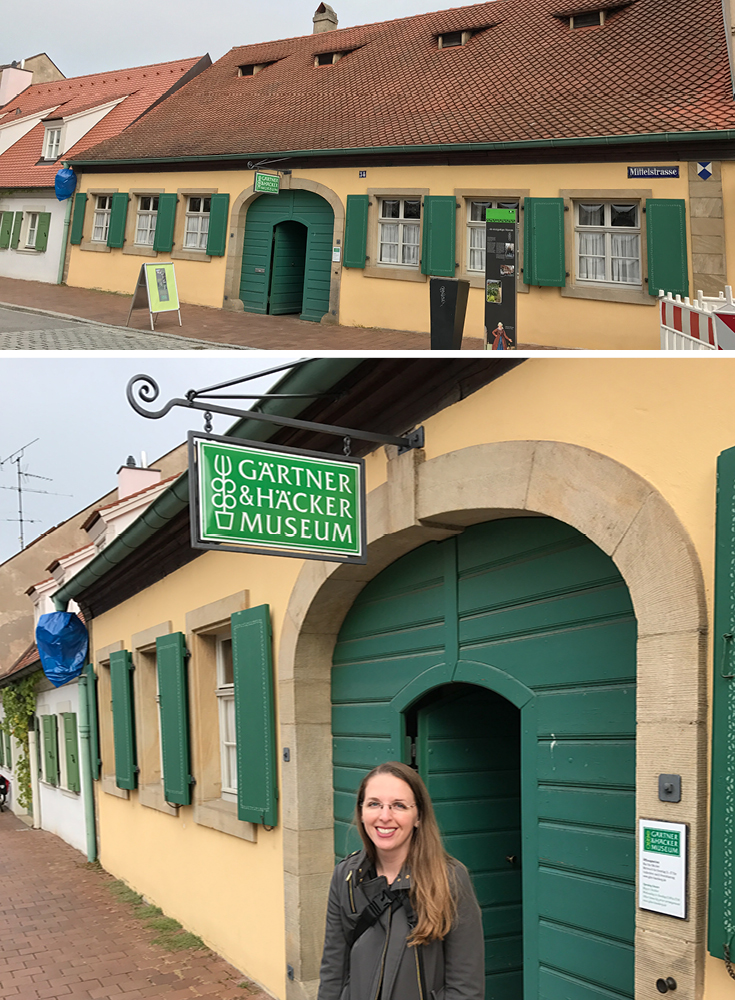
A large part of what makes Bamberg who it is as a city, and worthy of UNESCO world heritage as an entity, is it's unique gardening culture within the city limits. To understand why this is important, you have to see it. Visit Bamberg Market Gardeners’ and Vintners’ Museum and explore the surrounding gardening neighborhood with a guided map (sorry only in German Gardeners' District circular route (1,6 MB))
First off, I loved visiting the Gardeners’ and Vintners’ Museum in Bamberg. It was easily the most meaningful part of my trip to Bamberg. However, leading up to visiting, I was uncertain what I was really in for. The official website is completely in German, and the only other mention in English was abbreviated on other sites. If the website was only in German, would the museum only be in German? I was relieved to discover some English signage, and the available audio tour was completely available in English. So never fear! To help with the language barrier, I’ve typed up two of the English signs which I found at the museum that provide a great overview. Altogether, with my comments and photos, you'll agree that this museum is a must-see in Bamberg, Germany!
Listen to the Audio Guide, or Pass?
There are very, very few signs in the exhibits. You really need the audio guide to get the most out of your visit. The audio guide numbers hang from the ceiling and if it was a solid color and or had a wreath it was a main/general topic. Others were about specific items, like the kids toys. This way you still control your trip, rather than having the audio guide tell you where to go, which was nice.
How Long Will a Visit Take?
Estimate 1 hour if doing the audio guide.
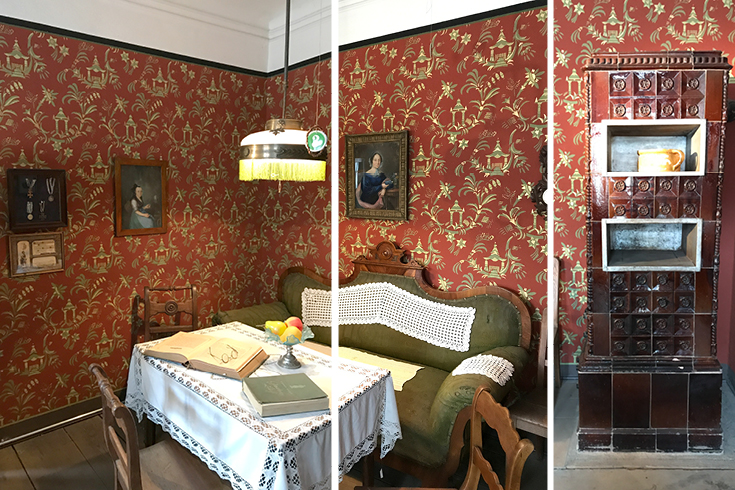
Taken from English Signage in the Museum
“Welcome to the Gardeners’ and Vintners’ Museum!
The museum offers an insight into the lives, culture and history of the city’s market gardeners and vintners. When Bamberg received World Heritage Site status in 1993, the unique cultural landscape of the market garden lands within the citiy was one of the reasons.
Based in a typical gardener’s house from 1767, this indoor and outdoor museum invites you to learn about the gardeners’ lives around 1900. The diversity of vegetable and herb varieties as well as tools and religious customs are also documented. The gardeners and vintners of Bamberg founded a museum society in 1975 and opened their museum in 1979. In 2012 the exhibition was completely redesigned.
Since the late Middle Ages, Bamberg’s gardeners have made use of the lands east of the Regnitz river. The mild climate was conducive to growing many varieties originating in Mediterranean areas. Bamberg’s gardeners became known throughout Europe and achieved commercial success through the trade in liquorice root (the raw material for medicinal remedies and liquorice confectionery) as well as in seeds for onions, caraway, leeks, swede, turnips and beets, kohlrabi, lettuce and spinach.
The vintners’ were known, like the gardeners, as farming townsmen (Häcker in local dialect, which derives from the hacking action associated with their work and their tools). In the 18th century the climate grew colder due to the Little Ice Age and production of Bamberg wine, which had come to be called belly-biter (Ranzenbeißer), was no longer viable. The producers switched to hops, fruit and grains.”
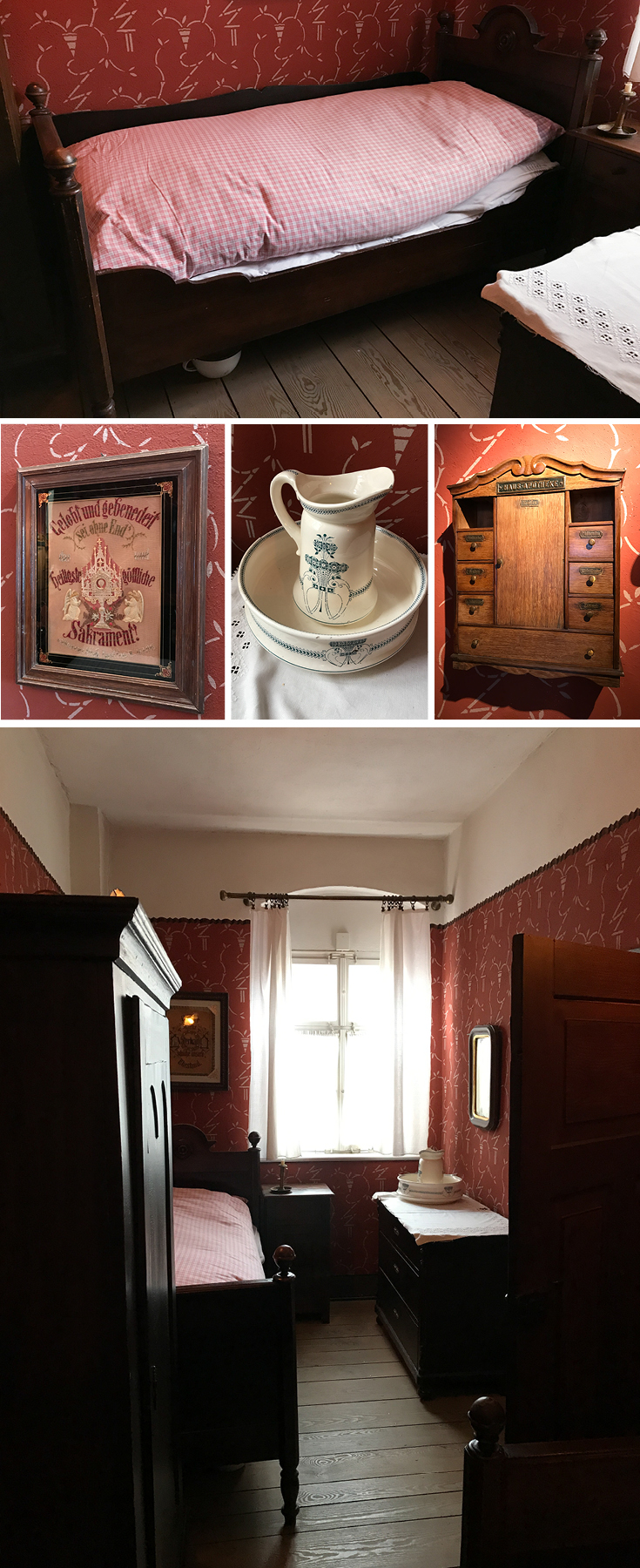
The Gardeners' Home
The home was styled for 1767 with a general parlor, kitchen, bedroom, kids’ room, grandparents’ room (which was an exhibit room and not styled as it was during the time). The through-way, or center foyer of the house was designed to allow a wagon to pass through to store food directly above the living quarters or to the garden out back.
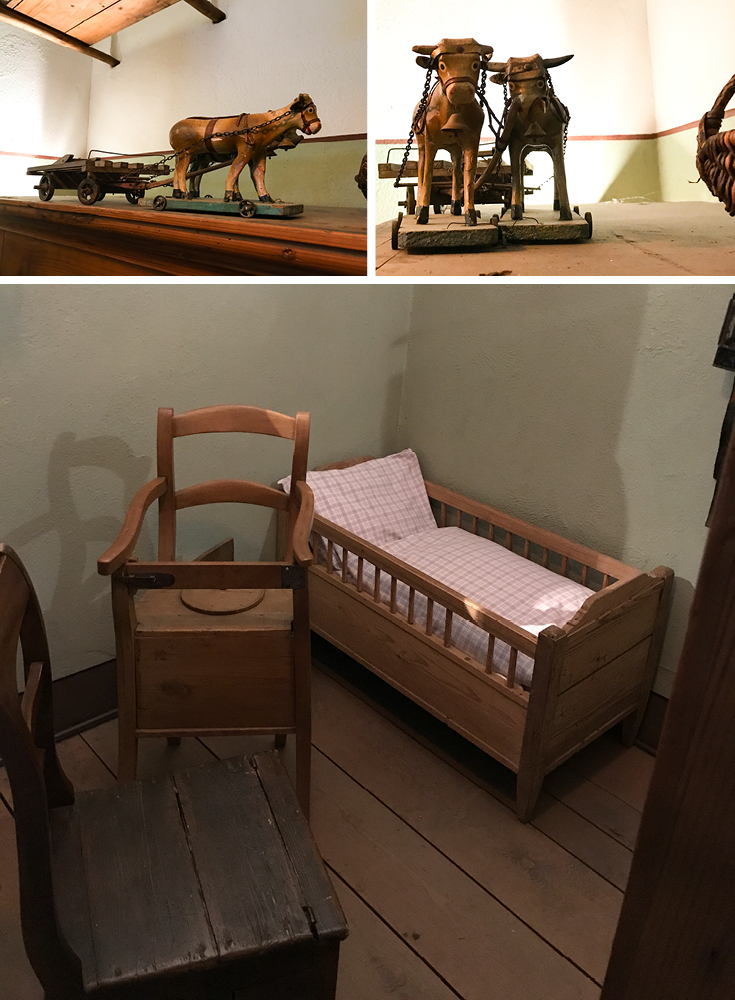
The Kitchen was Surprisingly My Favorite Room
I loved how they used open shelving to organize the kitchen. The stencil border, periwinkle blue, and stone tile combined for a charming kitchen. Attached directly to the wall are metal containers for flour and salt where you could directly scoop from while cooking.
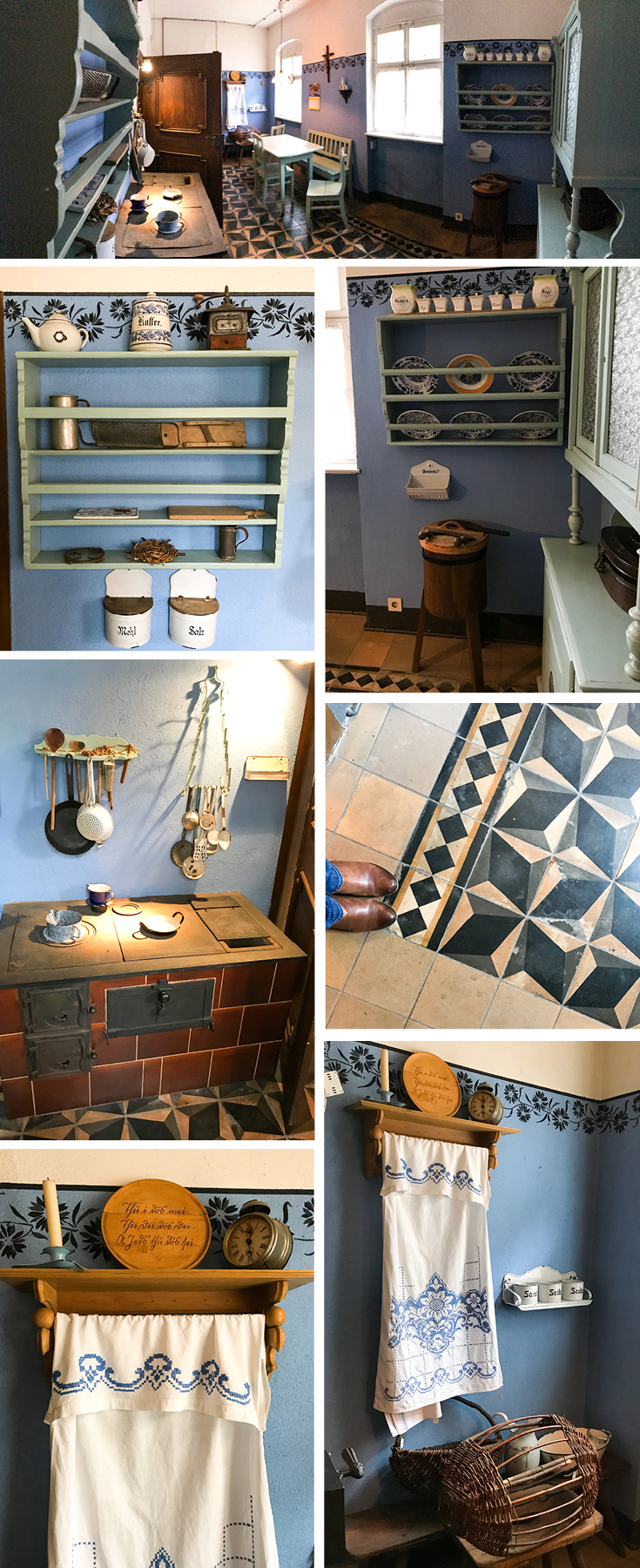
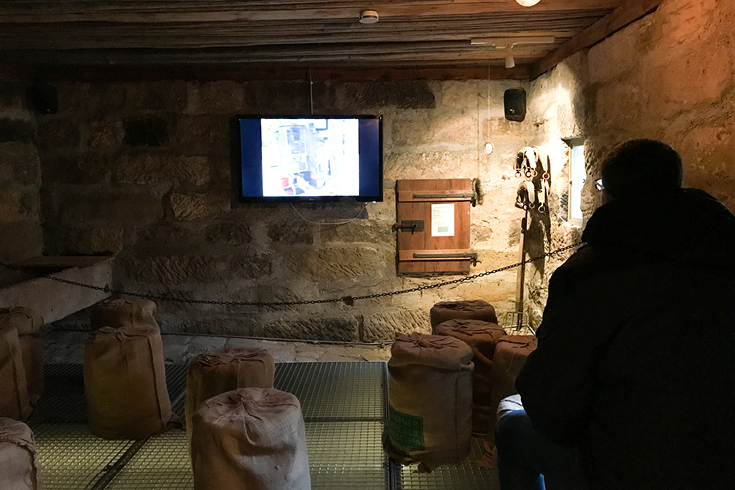
Hay Loft
In the loft above, there was an interactive video oriented display that explained the different farming and gardening tools. They also had period costumes of the time as well as a large historical photo showing the sellers, and the baskets they carried and sold from.
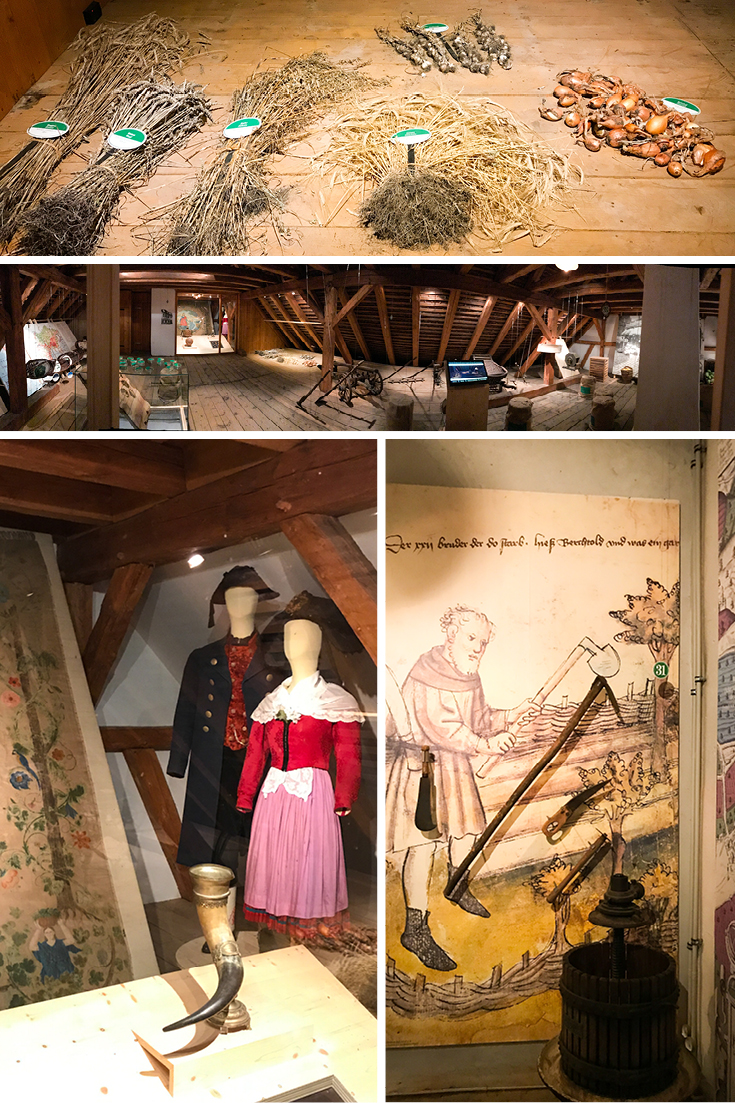
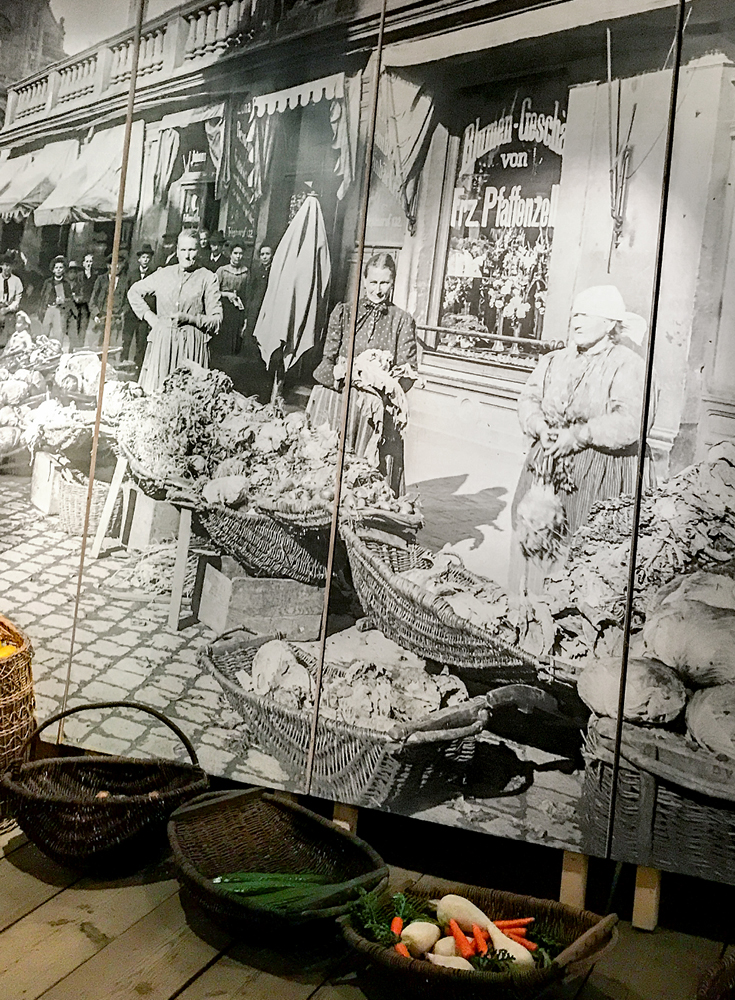
The Grandparents' Room
Here, the Museum showcases the Guild's processional staffs that were used in religious ceremonies and parades.
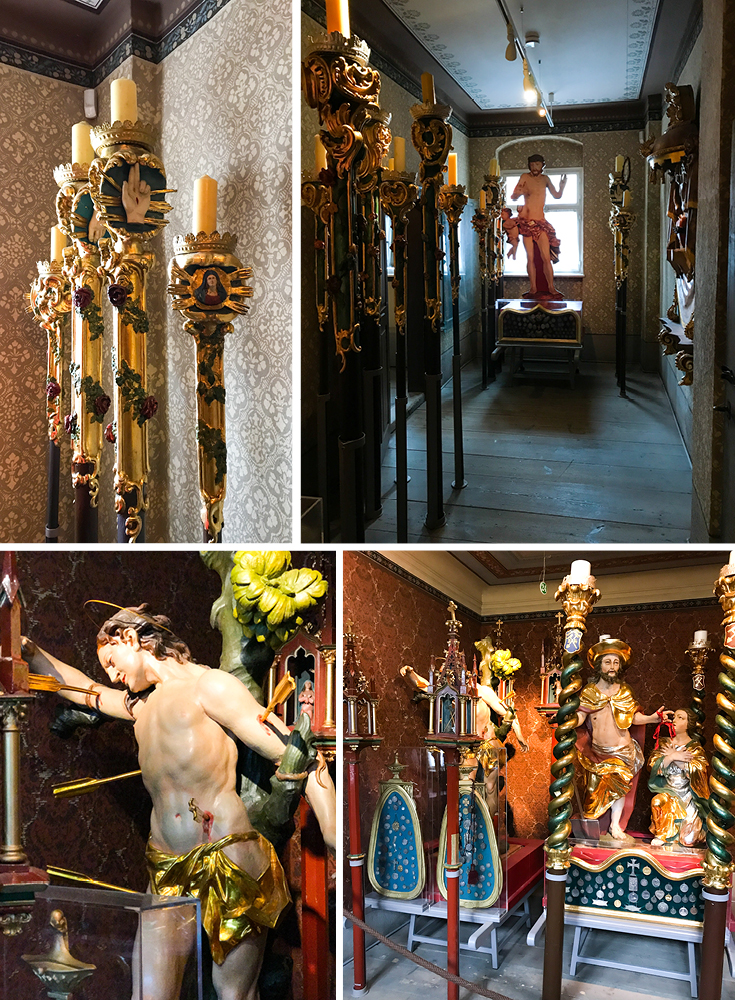

Bamberg Heritage Garden
The working garden out back had everything from flowers to vegetables. A church stood sentry in a distance making for a picturesque vista.
Taken from English Signage in the Garden:
“Bamberg Heritage Garden: Helping to conserve the “green heritage” of Bamberg’s gardeners
The Bamberg Heritage Garden was founded as part of the Urban Gardening Project run by the Bamberg World Heritage Office. In July 2013 a specially-founded voluntary association took over the running of the Bamberg Heritage Garden. The plants are cultivated following organic principles by volunteer workers from the association. The Bamberg Heritage Garden contributes to the conservation of the rare, local Bamberg vegetable varieties. It assists in the rediscovery of vegetables and varieties that are unique to Bamberg, some of which may already have died out or been forgotten. In the past, the seeds of local varieties, as well as knowledge about how to use them, have been lost. The Heritage Garden is intended to counteract such loss. In addition to preserving the ‘green heritage’ of the Bamberg gardeners, the garden is also a place where knowledge about growing and tending can be handed down-intangible heritage.
In the Heritage Garden multiple varieties of a plant are grown side by side, compared and explained. In this way, the Bamberg Heritage Garden helps maintain biodiversity, while also making history and environmental education come alive. Along with the well-known Bamberg local varieties of garlic, onion, radish, pointed savoy cabbage and the ‘Hörnla’ potato, numerous heirloom varieties of bush and climbing beans from the Bamberg region are being grown, which in former times were of great importance in local cuisine. In the course of the project seeds have also been discovered of lone local variety previously believed to have been lost- the Bamberg pear-shaped onion. This onion variety has been cultivated in the Heritage Garden since it's rediscovery, with the aim of propagating the seeds and preserving the variety for future generations.”
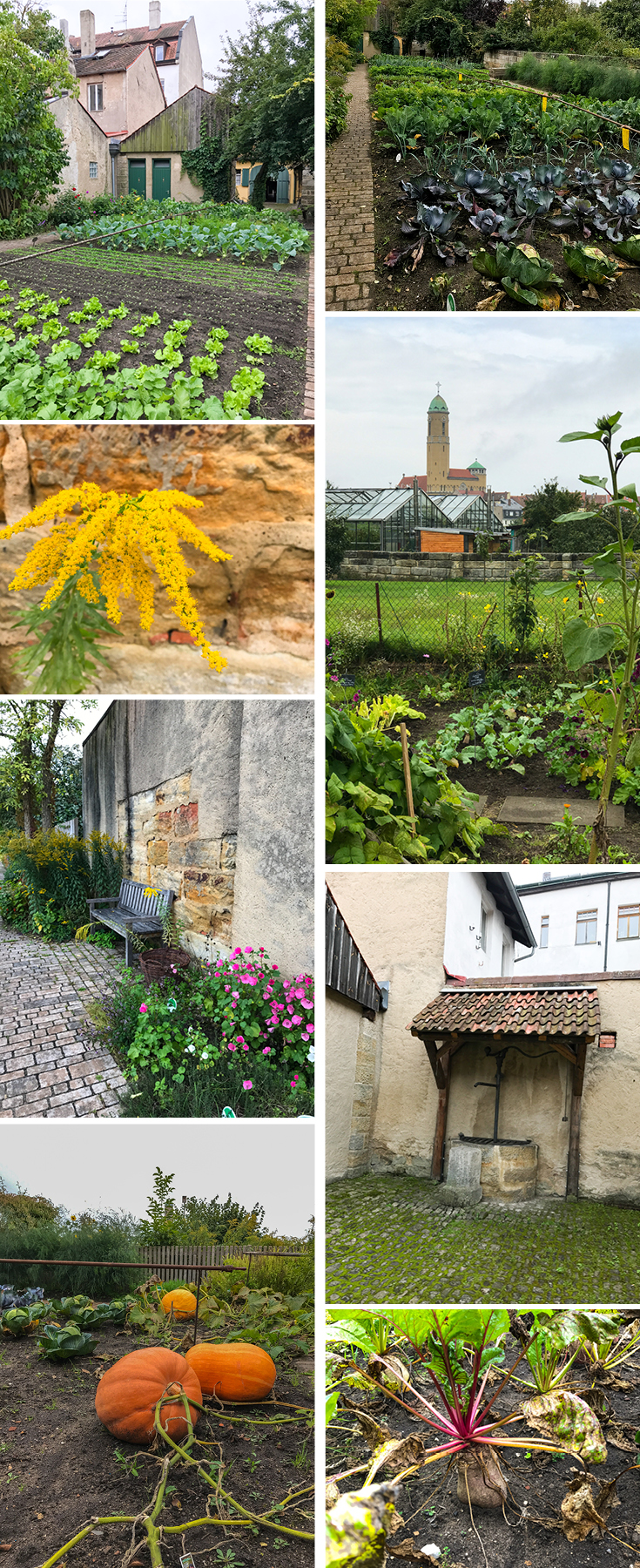
Follow Along
If you enjoyed this article, or these topics sound interesting to you, you'll love our weekly newsletter. You'll receive the newest posts each week and exclusive access to free planning resources like ‘Packing List & Tips for 2 Weeks in Germany’ and ‘Everything You Need to Rent a Car in Germany’.
Thank you for reading!

One of my favorite city souvenirs is local sweets, and Heidelberg has a great piece of edible history that you can take home with you and share. It is called Studentenkuss, which translates to student kiss. It is made with nougat on a waffle bottom, covered in dark chocolate. Let’s dive into the history of this product for a moment and imagine Heidelberg in 1863.
During the nineteenth century, young women were often only allowed in public, when they were accompanied by aunts or older sisters. Contact or meetings with men were therefore only possible under the supervision of an extra set of watchful eyes. The Café Knösel in Heidelberg became a popular meeting point for young ladies of the local girls' boarding school, but also for students of the Ruprecht-Karls-University.
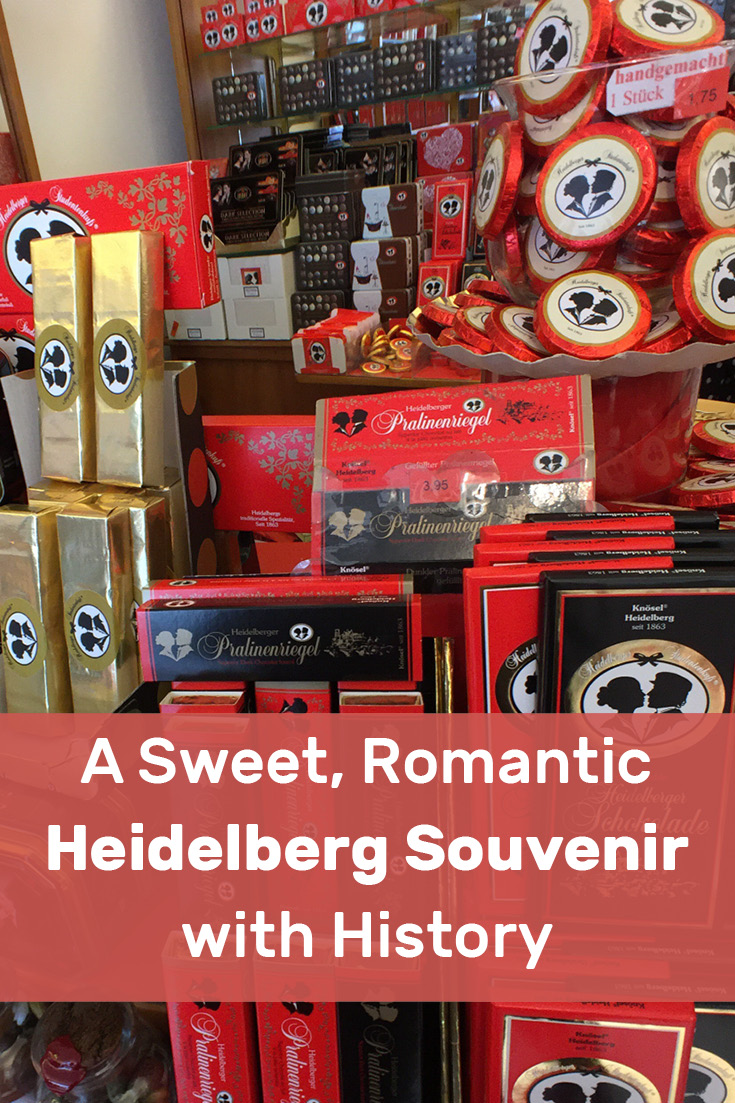
Café operator and confectioner Fridolin Knösel invented the student kiss in 1863, a delightful, sweet treat. The chief attraction, besides the great taste, was the packaging. The student kiss chocolate came in a small box, often accompanied by a handwritten message which could not be seen by the chaperones of the young women. This made it much easier for the young men to flirt and communicate with the adored girl. Even without a handwritten message, printed on each chocolate foil, is a student of a student union with student cap and a young woman right before they are about to kiss. If you receive a chocolate like this, you know that someone has feelings for you.
Much time has passed since 1863, but the students kiss chocolate still exists today as an amicable reminder of bygone, romantic times. The sweet idea of Fridolin Knösel developed into a small piece of Heidelberg's history and is still produced fresh several times per week. The original Café Knösel, where the Heidelberg student kiss was invented, was sold and does not belong to the Knösel family anymore. The student kisses, however, are still made and sold by the Knösel siblings, two houses away from Café Knösel.
Follow Along
If you enjoyed this article, or these topics sound interesting to you, you'll love our weekly newsletter. You'll receive the newest posts each week and exclusive access to free planning resources like ‘Packing List & Tips for 2 Weeks in Germany’ and ‘Everything You Need to Rent a Car in Germany’.
Thank you for reading!

Centrally located in the middle of the pedestrian zone, the Kurpfälzisches Museum der Stadt Heidelberg, Electoral Palatinate Museum, is located inside the Palais Morass, a Baroque palace building. The history of the museum dates back to the initiative of the French emigre, Count Charles de Graimberg, who from 1810 began to devote himself to preserve the history of the Heidelberg Palace and the Palatine Princely House. His collection of coins, pictures and altars as well as sculptures (over 3,500) are the foundation of the Kurpfalz Museum.
The art collection of Charles de Graimberg was purchased from the city in 1879 and the museum was opened in 1908. After adding a new building in 1991 adjacent to the palace building, the collection grew immensely, and makes the museum experience itself a wild adventure of different styles of rooms, floors, and exhibits. It feels like the inside is so much bigger than the outside lets on. Besides collections of paintings from the 15th to the 20th century, you can also find sculptures, porcelain, Heidelberg city history, and costumes from a bygone era. Denise fell in love with Karl Weysser’s painting ‘Alte Poststation in Heidelberg mit Blick in die Seminarstrasse,’ and finding a postcard with the artwork on it in the gift shop made her very happy.
Besides art, there are also numerous archaeological finds in the museum, mainly through the remains of the Roman Neckar Bridge, which was discovered in 1877. Further archaeological excavations in Heidelberg and the surrounding palatine area after WWII, made the collection grow considerably.
History, art, porcelains, historical costumes, archaeology, period interiors, the Kurpfälzisches Museum der Stadt Heidelberg has something for everyone, and we enjoyed it very much! For more information regarding visiting hours and the history of the museum, visit their official site Kurpfälzisches Museum.
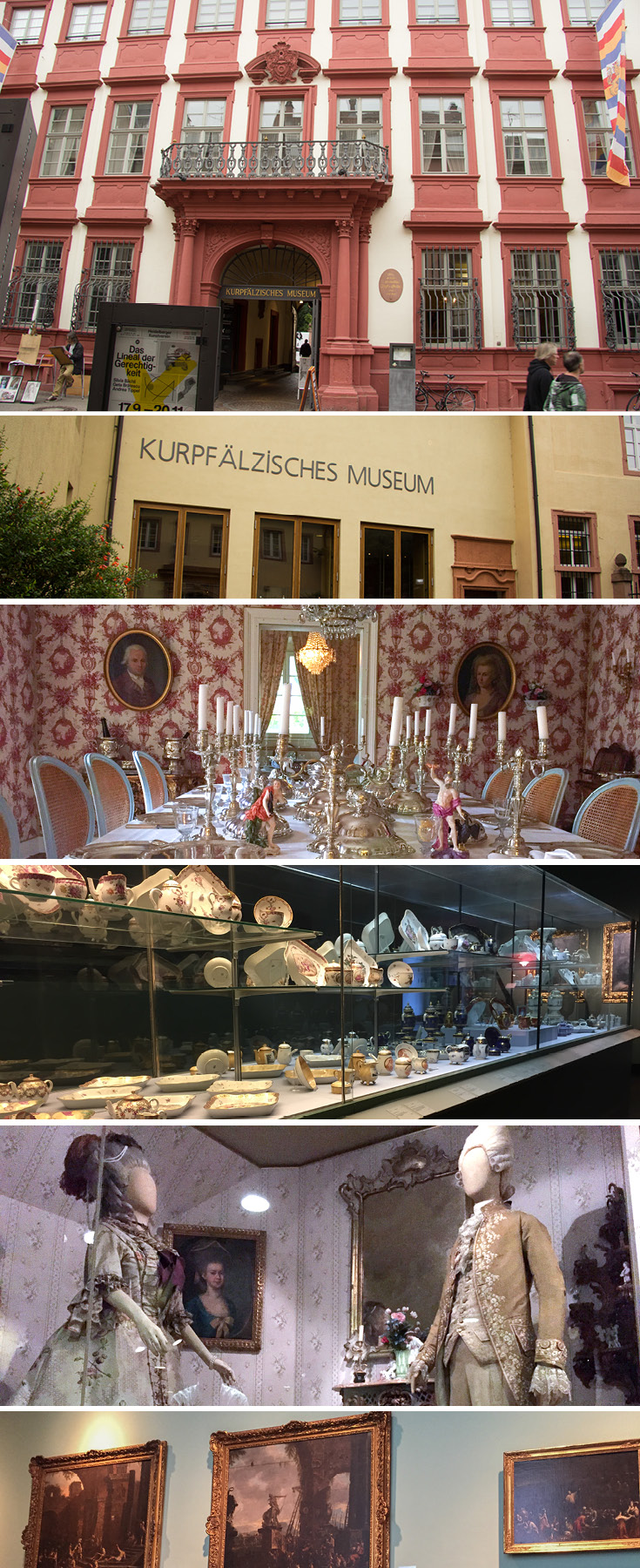
Follow Along
If you enjoyed this article, or these topics sound interesting to you, you'll love our weekly newsletter. You'll receive the newest posts each week and exclusive access to free planning resources like ‘Packing List & Tips for 2 Weeks in Germany’ and ‘Everything You Need to Rent a Car in Germany’.
Thank you for reading!

